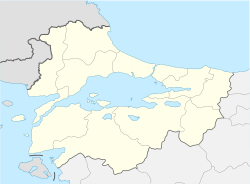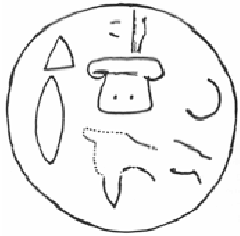
The Achaeans constitute one of the collective names for the Greeks in Homer's Iliad and Odyssey. The other common names are Danaans and Argives while Panhellenes and Hellenes both appear only once; all of the aforementioned terms were used synonymously to denote a common Greek civilizational identity. In the historical period, the Achaeans were the inhabitants of the region of Achaea, a region in the north-central part of the Peloponnese. The city-states of this region later formed a confederation known as the Achaean League, which was influential during the 3rd and 2nd centuries BC.

Troy or Ilion was an ancient city, known as the setting for the Greek myth of the Trojan War. It was located at Hisarlik in present-day Turkey, 30 kilometres (19 mi) south-west of Çanakkale.

Mycenae is an archaeological site near Mykines in Argolis, north-eastern Peloponnese, Greece. It is located about 120 kilometres south-west of Athens; 11 kilometres north of Argos; and 48 kilometres south of Corinth. The site is 19 kilometres inland from the Saronic Gulf and built upon a hill rising 900 feet above sea level.
The 12th century BC is the period from 1200 to 1101 BC. The Late Bronze Age collapse in the ancient Near East and eastern Mediterranean is often considered to begin in this century.

Kültepe, also known as Kanesh or Nesha, is an archaeological site in Kayseri Province, Turkey. The nearest modern city to Kültepe is Kayseri, about 20 km southwest. It consists of a tell, the actual Kültepe, and a lower town, where an Assyrian settlement was found. Its ancient names are recorded in Assyrian and Hittite sources. In Old Assyrian inscriptions from the 20th and the 19th century BCE, the city was mentioned as Kaneš (Kanesh); in later Hittite inscriptions, the city was mentioned as Neša, or occasionally as Aniša (Anisha). In 2014, the archaeological site was inscribed in the Tentative list of World Heritage Sites in Turkey. It is also the site of discovery of the earliest traces of the Hittite language, the earliest attestation of an Indo-European language, dated to the 20th century BCE.
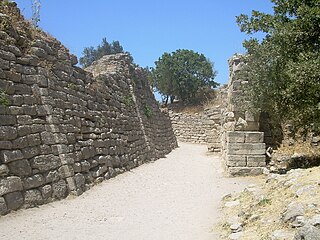
The Troada or Troad, or Troas, is the historical name of the Biga Peninsula in the northwestern part of Anatolia, Turkey. This region now is part of the Çanakkale province of Turkey. Bounded by the Dardanelles to the northwest, by the Aegean Sea to the west and separated from the rest of Anatolia by the massif that forms Mount Ida, the Troad is drained by two main rivers, the Scamander (Karamenderes) and the Simois, which join at the area containing the ruins of Troy.
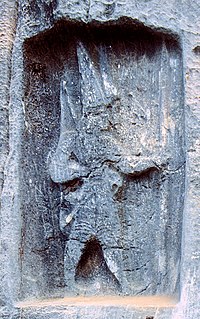
Arzawa was the name of a region and a political entity in Western Anatolia in the second half of the 2nd millennium BC. The core of Arzawa is believed to be along the Kaystros River, with its capital at Apasa, later known as Ephesus. When the Hittites conquered Arzawa, it was divided into three Hittite provinces: a southern province called Mira along the Maeander River, which would later become known as Caria; a northern province called the Seha River Land, along the Gediz River, which would later become known as Lydia; and an eastern province called Hapalla.

Mycenaean Greece was the last phase of the Bronze Age in Ancient Greece, spanning the period from approximately 1750 to 1050 BC. It represents the first advanced and distinctively Greek civilization in mainland Greece with its palatial states, urban organization, works of art, and writing system. The Mycenaeans were autochthonous Greeks who were likely stimulated by their contact with Minoan Crete and other Mediterranean cultures to develop a more sophisticated sociopolitical culture of their own. The most prominent site was Mycenae, in the Argolid, after which the culture of this era is named. Other centers of power that emerged included Pylos, Tiryns, Midea in the Peloponnese, Orchomenos, Thebes, Athens in Central Greece and Iolcos in Thessaly. Mycenaean and Mycenaean-influenced settlements also appeared in Epirus, Macedonia, on islands in the Aegean Sea, on the south-west coast of Asia Minor, the Levant, Cyprus, and Italy.
Wilusa, or Wilusiya was a Late Bronze Age city in western Anatolia known from references in fragmentary Hittite records. The city is notable for its identification with the archaeological site of Troy, and thus its potential connection to the legendary Trojan War.
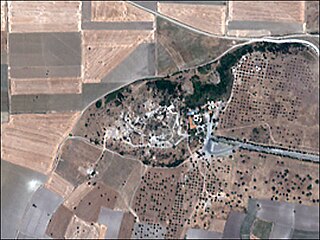
Hisarlik, often spelled Hissarlik, is the Turkish name for an ancient city located in what is known historically as Anatolia. It is part of Çanakkale, Turkey. The archaeological site lies approximately 6.5 kilometres (4.0 mi) from the Aegean Sea and about the same distance from the Dardanelles. The site is a partial tell, or artificial hill, elevated in layers over an original site. In this case the original site was already elevated, being the west end of a ridge projecting in an east–west direction from a mountain range.

The extent of the historical basis of the Homeric epics has been a topic of scholarly debate for centuries. While researchers of the 18th century had largely rejected the story of the Trojan War as fable, the discoveries made by Heinrich Schliemann at Hisarlik reopened the question in modern terms, and the subsequent excavation of Troy VIIa and the discovery of the toponym "Wilusa" in Hittite correspondence has made it plausible that the Trojan War cycle was at least remotely based on a historical conflict of the 12th century BC, even if the poems of Homer are removed from the event by more than four centuries of oral tradition.

The Late Bronze Age collapse was a dark age transition in a large area covering much of Southeast Europe, West Asia and North Africa, which took place from the Late Bronze Age to the emerging Early Iron Age. It was a transition which historians believe was violent, sudden, and culturally disruptive, and involved societal collapse for some civilizations during the 12th century BCE. The palace economy of Mycenaean Greece, the Aegean region and Anatolia that characterized the Late Bronze Age disintegrated, transforming into the small isolated village cultures of the Greek Dark Ages. The Hittite Empire of Anatolia and the Levant collapsed, while states such as the Middle Assyrian Empire in Mesopotamia and the New Kingdom of Egypt survived but were considerably weakened.
The Trojan language was the language spoken in Troy during the Late Bronze Age. The identity of the language is unknown, and it is not certain that there was one single language used in the city at the time.

Alacahöyük or Alaca Höyük is the site of a Neolithic and Hittite settlement and is an important archaeological site. It is situated in Alaca, Çorum Province, Turkey, northeast of Boğazkale, where the ancient capital city Hattusa of the Hittite Empire was situated. Its Hittite name is unknown: connections with Arinna, Tawiniya, and Zippalanda have all been suggested.

Hilakku was one of the Neo-Hittite states during the Iron Age in southern Anatolia during the 1st millennium BC.
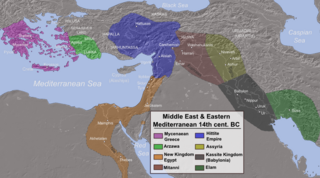
Attarsiya was a 15th–14th century BCE military leader of Ahhiya. In the Hittite archives of circa 1400 BCE, he is described as a "man of Ahhiya", a country identified with the Achaeans and Mycenaean Greece. The campaigns of Attarsiya, as well as his conflict with the Hittite vassal, Madduwatta, represent the first recorded Mycenaean Greek military activity on the Anatolian mainland, as well as the first conflict between Achaeans and Hittites. He finally withdrew from Anatolia after Hittite intervention, but later launched a campaign against Alashiya (Cyprus).
Hassum was a Hurrian city-state, located in southern Turkey most probably on the Euphrates river north of Carchemish.

The military nature of Mycenaean Greece in the Late Bronze Age is evident by the numerous weapons unearthed, warrior and combat representations in contemporary art, as well as by the preserved Greek Linear B records. The Mycenaeans invested in the development of military infrastructure with military production and logistics being supervised directly from the palatial centres. This militaristic ethos inspired later Ancient Greek tradition, and especially Homer's epics, which are focused on the heroic nature of the Mycenaean-era warrior élite.

The Tomb of Clytemnestra was a Mycenaean tholos type tomb built in c. 1250 BC. A number of architectural features such as the semi-column were largely adopted by later classical monuments of the first millennium BC, both in the Greek and Latin world. The Tomb of Clytemnestra with its imposing façade is together with the Treasury of Atreus the most monumental tomb of that type.
Kukkunni was a king of Wilusa mentioned in the Alaksandu Treaty as an ally of the Hittite king Suppiluliuma I. He ruled over the city during a period of peace and prosperity visible in the archaeological layer of Troy VI. The later Greek name Kyknos has been argued to be a Hellenization of his name.

